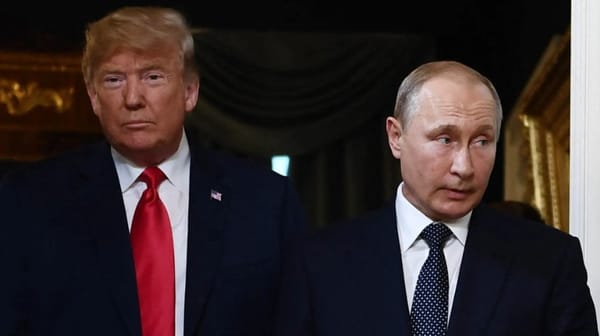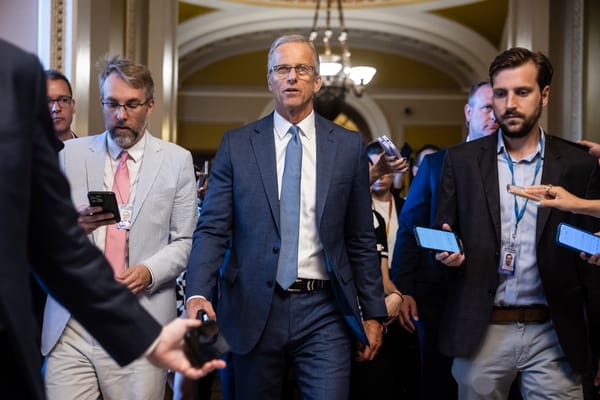Russia-Ukraine Negotiations: A Complex Dance of Diplomacy and Conflict

The ongoing negotiations between Russia and the United States regarding a potential ceasefire in Ukraine have taken center stage in recent days, highlighting the intricate dynamics of international diplomacy amidst a protracted conflict. As of March 25, 2025, these talks have yielded limited progress, with both sides engaging in a delicate balancing act between diplomatic overtures and strategic maneuvering.
Recent Developments
On March 24, 2025, Russian and U.S. officials met in Saudi Arabia to continue negotiations about a potential partial ceasefire in Ukraine[1]. The talks focused on halting attacks on energy facilities and ships in the Black Sea. However, the discussions concluded without a formal agreement, despite initial expectations of a joint statement[1:1].
Vladimir Chizhov, a senior Russian defense official, attributed the lack of progress to Ukraine's position, stating that after 12 hours of negotiations, an agreement on a joint statement was seemingly reached but ultimately not accepted due to Ukraine's stance[1:2].
Key Players and Their Positions
Russia:
- President Vladimir Putin has agreed to a limited 30-day ceasefire on energy infrastructure targets[2].
- Putin seeks broader concessions, including an end to foreign military assistance to Ukraine[2:1].
- The Kremlin views improved relations with the U.S. as an economic and geopolitical opportunity[3].
United States:
- President Donald Trump has been pushing for a swift conclusion to the conflict[1:3].
- The U.S. proposed a 30-day ceasefire, which Ukraine accepted but Russia has not fully endorsed[2:2].
- Trump's administration is attempting to balance diplomatic efforts with maintaining support for Ukraine.
Ukraine:
- President Volodymyr Zelenskyy remains skeptical of Russia's commitment to peace[4].
- Ukraine has agreed to the U.S.-proposed 30-day ceasefire[2:3].
- The country continues to face ongoing attacks, including recent strikes in Sumy[1:4].
Negotiation Dynamics
The negotiations reveal a complex interplay of interests and strategies:
- Limited Agreements: While a full ceasefire remains elusive, smaller agreements have been reached. For instance, Putin agreed to temporarily halt attacks on energy and infrastructure targets in Ukraine following a call with Trump[2:4].
- Separate Tracks: Russia appears to be pursuing negotiations over Ukraine and U.S.-Russia ties on two separate tracks. This allows Putin to seek a far-reaching victory in Ukraine while simultaneously exploring the benefits of improved relations with the U.S.[3:1].
- Prisoner Exchange: As a goodwill gesture, Putin informed Trump of a planned prisoner exchange between Russia and Ukraine, involving 175 prisoners of war from each side and 23 badly wounded Ukrainian soldiers[4:1].
- Technical Discussions: Both sides have agreed to commence technical discussions on implementing a maritime ceasefire in the Black Sea and broader ceasefire initiatives[2:5].
- Economic Considerations: The potential for substantial economic agreements and geopolitical stability once peace is established has been emphasized by both sides[2:6].
Challenges and Obstacles
Several factors complicate the path to a comprehensive ceasefire:
- Continuing Hostilities: Despite diplomatic efforts, Russia continues its military operations in Ukraine. Recent attacks in Sumy, targeting residential areas and civilian infrastructure, underscore the ongoing violence[1:5].
- Divergent Objectives: While the U.S. seeks a swift resolution, Russia appears to be using the negotiations to extract maximum concessions while maintaining its military advantage[3:2].
- Ukraine's Position: Zelenskyy's skepticism about Russia's intentions and Ukraine's insistence on maintaining its sovereignty and territorial integrity pose challenges to reaching a mutually acceptable agreement[4:2].
- Military Aid: Putin's demand for an end to foreign military assistance to Ukraine conflicts with the West's commitment to supporting Ukraine's defense capabilities[2:7].
- Domestic Politics: Both Putin and Trump face domestic pressures that influence their negotiating positions and ability to make concessions.
Implications and Future Prospects
The outcome of these negotiations will have far-reaching consequences for regional stability and global geopolitics:
- U.S.-Russia Relations: A successful ceasefire could pave the way for improved bilateral relations, potentially leading to economic cooperation and geopolitical realignments[3:3].
- Ukraine's Future: The terms of any ceasefire or peace agreement will significantly impact Ukraine's territorial integrity, sovereignty, and future alignment with Western institutions.
- NATO and European Security: The resolution of the conflict will have implications for NATO's role in Eastern Europe and the broader European security architecture.
- Global Order: The manner in which this conflict is resolved could set precedents for how future international disputes are handled, particularly those involving great power competition.
Conclusion
As negotiations continue, the path to peace in Ukraine remains fraught with challenges. The limited progress made thus far underscores the complexity of the situation and the divergent interests at play. While the agreement on a temporary halt to attacks on energy infrastructure represents a positive step, it falls far short of the comprehensive ceasefire needed to end the conflict.
The coming weeks will be crucial in determining whether these diplomatic efforts can translate into meaningful progress on the ground. Much will depend on the willingness of all parties to make difficult compromises and on the ability of international mediators to bridge the significant gaps that remain.
As the world watches, the outcome of these negotiations will not only shape the future of Ukraine but also have profound implications for global security and the international order in the years to come.
https://www.nbcnews.com/news/world/russia-ukraine-trump-putin-witkoff-saudi-ceasefire-peace-war-zelenskyy-rcna197926 ↩︎ ↩︎ ↩︎ ↩︎ ↩︎ ↩︎
https://www.cnn.com/2025/03/18/politics/trump-putin-ceasefire-russia-ukraine-war/index.html ↩︎ ↩︎ ↩︎ ↩︎ ↩︎ ↩︎ ↩︎ ↩︎
https://www.nytimes.com/2025/03/24/world/europe/trump-russia-putin-ukraine.html ↩︎ ↩︎ ↩︎ ↩︎
https://apnews.com/article/trump-putin-call-ceasefire-russia-ukraine-zelenskyy-0d2ca5b69761082979dd9836932ae84f ↩︎ ↩︎ ↩︎




